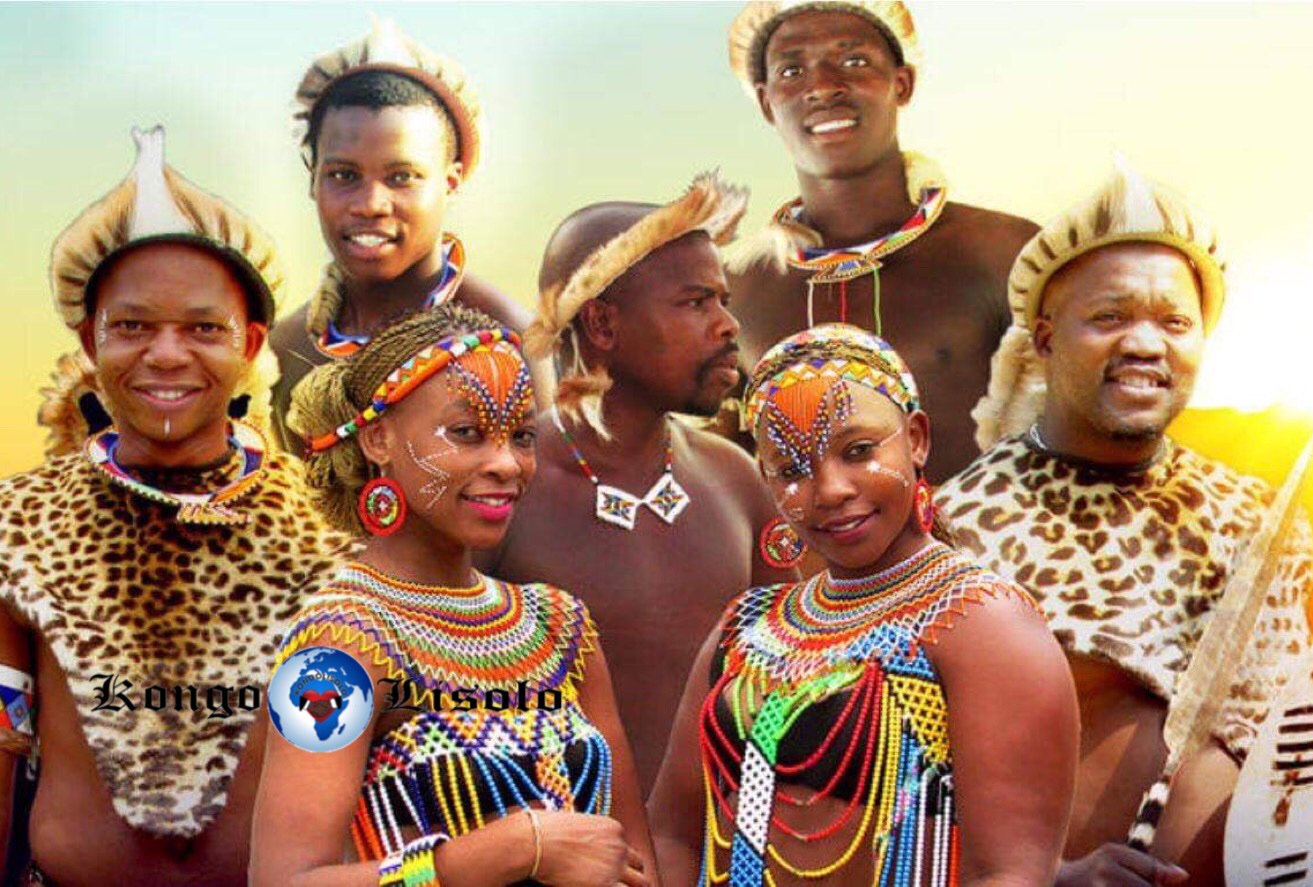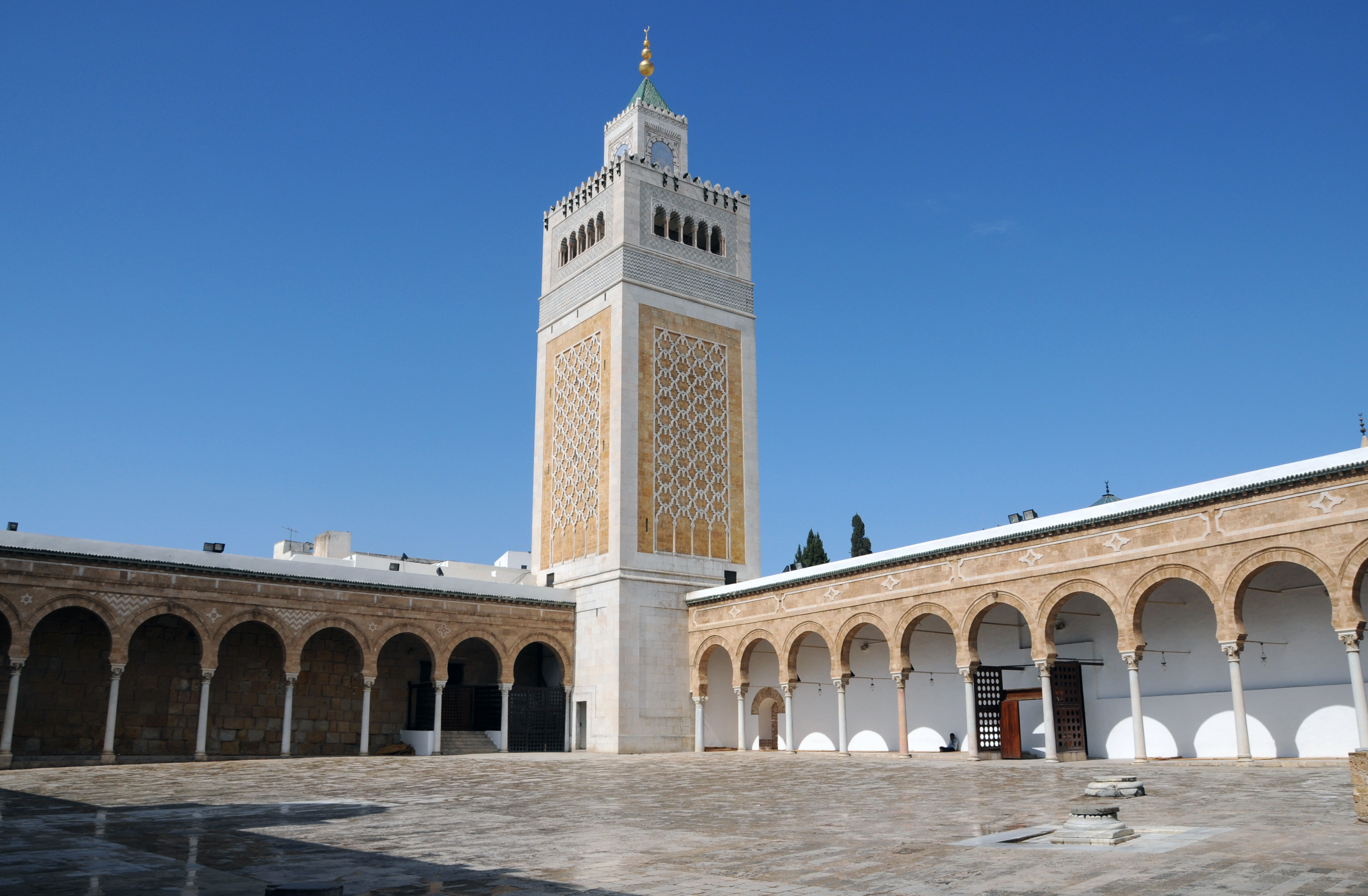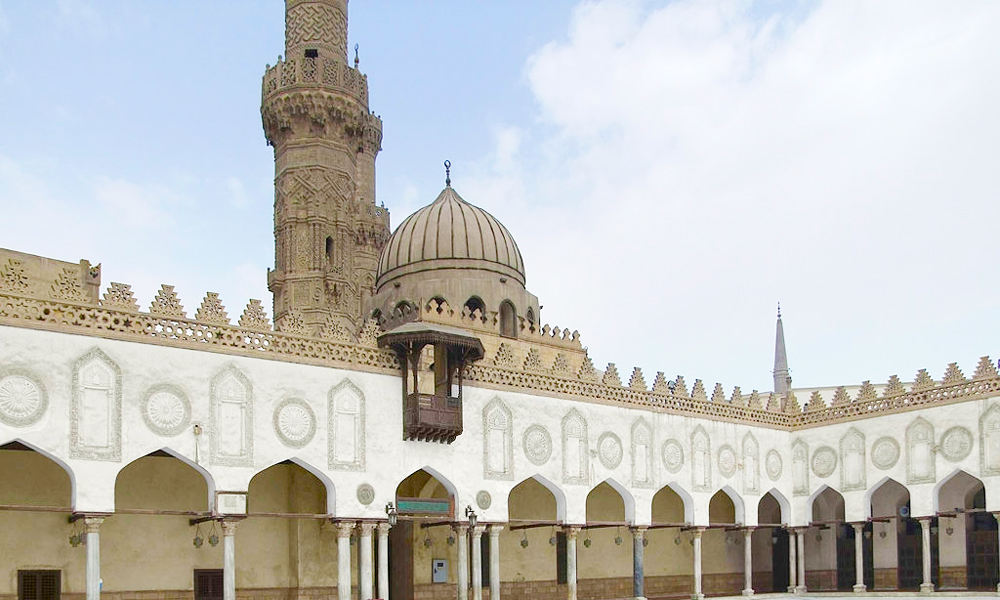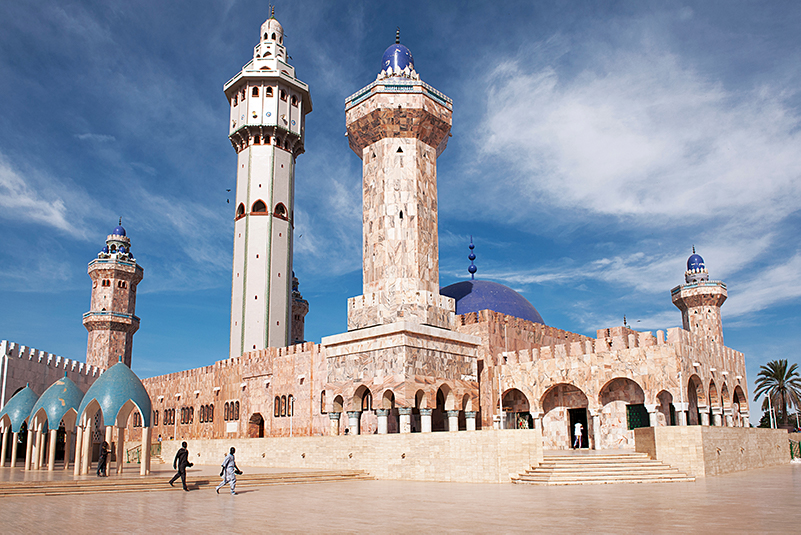Africa, the world's second-largest continent, is not only celebrated for its diverse landscapes, wildlife, and languages but also for its rich cultural heritage. Among the many cultural facets that have shaped this continent, Islamic culture stands out as a vibrant and enduring force. In this comprehensive exploration, we delve into the multifaceted world of Islamic culture in Africa, tracing its historical roots, its diverse expressions, and its enduring impact on the continent.
Islamic Culture In Africa With A Historical Perspective
The historical narrative of Islam in Africa is a compelling tale of cross-cultural exchange, adaptation, and harmonious coexistence. It begins in the 7th century when Islamic traders and travelers first ventured into African territories along the ancient trade routes. Over the centuries, this initial contact laid the foundation for a remarkable fusion of Islamic and indigenous African cultures, forging a vibrant and distinctive Islamic identity on the continent.
The Early Roots Of Islam In Africa
The introduction of Islam to Africa can be traced to multiple points of entry. In North Africa, the Arab expansion brought Islam to regions like Egypt, Tunisia, and Morocco, where it took root and thrived. The historic city of Alexandria in Egypt, known for its ancient library and multicultural influences, became a vital hub for Islamic scholarship and the exchange of knowledge.
As Islam gradually spread southward into Sub-Saharan Africa, it encountered a rich tapestry of diverse cultures and belief systems. Islamic traders and missionaries played a pivotal role in disseminating the faith, often marrying local customs with Islamic teachings to create a harmonious blend of traditions.
The Swahili Coast And East African Islam
Along the Swahili Coast of East Africa, cities like Zanzibar, Mombasa, and Lamu became thriving Islamic centers. Here, the fusion of Islamic, Arab, and African influences resulted in the development of unique architectural styles, a rich literary tradition, and a vibrant coastal culture that embraced Islam as an integral part of daily life. The Swahili language itself, a blend of Bantu languages and Arabic script, attests to the enduring impact of Islamic culture in the region.
The Empires Of West Africa
In West Africa, the Mali Empireand the Songhai Empire played pivotal roles in the propagation of Islam. The legendary city of Timbuktu, situated along the Niger River, became renowned not only for its grand mosques and libraries but also for its status as a vibrant center of Islamic scholarship. Scholars from across the Islamic world flocked to Timbuktu to study, exchange ideas, and contribute to the preservation of knowledge.
Integration And Syncretism
One of the most remarkable aspects of Islamic culture in Africa is its ability to integrate seamlessly with local traditions and belief systems. This syncretism is evident in the architecture, art, music, and cuisine of African Muslim communities. Mosques adorned with intricate geometric patterns often incorporate elements of traditional African design. Music and dance, deeply rooted in African culture, have found common ground with Islamic spiritual expression, resulting in the creation of unique Sufi musical traditions.
A Beacon Of Tolerance
Throughout its history, Islamic culture in Africa has been characterized by a spirit of tolerance and coexistence. It has provided a platform for interfaith dialogue and understanding, enabling people of different faiths to live harmoniously side by side. This ethos of tolerance continues to be a defining feature of Islamic culture in Africa, contributing to the continent's rich social fabric.
Diverse Geographical Presence
The expansive continent of Africa is a remarkable mosaic of cultures, languages, and traditions, and Islamic culture has woven itself intricately into this tapestry. One of the distinguishing features of Islamic culture in Africa is its expansive geographical presence, which transcends boundaries and regions. Let's explore how this diverse culture has flourished across different parts of the continent.
North Africa - A Cradle Of Islamic Civilization
North Africa stands as the cradle of Islamic civilization on the continent. Countries like Egypt, Tunisia, Algeria, and Morocco have a rich Islamic heritage dating back to the early days of Islam. Egypt, in particular, holds a prominent place in Islamic history, with its iconic landmarks such as the Al-Azhar Mosque and the historic city of Cairo serving as enduring symbols of Islamic culture. The great city of Alexandria, with its ancient libraries and vibrant trade routes, became a melting pot of Islamic learning and diverse cultural influences.
Tunisia and Morocco, with their stunning mosques, medinas, and a deep-rooted reverence for Islamic traditions, offer a glimpse into the historical significance of Islam in North Africa. The intricate architecture, adorned with ornate calligraphy and geometric patterns, stands as a testament to the artistry that has flourished under Islamic influence.
Sub-Saharan Africa
Moving southward into Sub-Saharan Africa, a diverse range of countries have embraced Islam, each contributing its unique character to the broader Islamic culture. Nigeria, with its large Muslim population, showcases the resilience of Islam in the face of cultural diversity. The city of Kano, for instance, boasts a rich history of Islamic scholarship and a thriving market culture influenced by Islamic principles.
Mali, in West Africa, is renowned for its historical empires, such as the Mali Empire and the Songhai Empire, which played pivotal roles in spreading Islam across the region. The ancient city of Timbuktu, nestled along the Niger River, is a UNESCO World Heritage site celebrated for its grand mosques, libraries, and scholarly traditions.
Senegal and Sudan offer distinct flavors of Islamic culture. In Senegal, Sufi Islam holds a special place, with vibrant Sufi brotherhoods like the Tijaniyya and Mouridiyya shaping both religious and cultural life. The annual Magal of Touba, a religious pilgrimage in Senegal, exemplifies the fusion of faith and celebration. Sudan, on the other hand, showcases a rich history of Islamic governance and architecture, with Khartoum's grand mosques and the ancient pyramids of Meroe serving as cultural landmarks.
A Diverse Continuum
Islamic culture in Africa is not static; it is a dynamic continuum that embraces a wide range of traditions, languages, and expressions. Whether in the bustling markets of Nigeria, the mystical chants of Sufi orders in Senegal, or the historic monuments of North Africa, the continent's Islamic culture is as diverse as its landscapes.
Architecture And Artistry
Islamic architecture in Africa is a mesmerizing testament to the convergence of diverse cultures, faiths, and artistic traditions. It serves as a vivid illustration of how Islamic culture seamlessly melded with indigenous African styles, resulting in breathtaking architectural wonders that grace the continent.
The Great Mosque Of Djenne
One of the most iconic examples of Islamic architecture in Africa is the Great Mosque of Djenne, located in Mali. This magnificent edifice, crafted primarily from adobe, boasts a unique and imposing presence on the African landscape. Its distinctive features include towering minarets and a facade adorned with protruding wooden beams, creating an otherworldly appearance.
The Great Mosque of Djenne serves as a symbol of devotion and community for the local population. Each year, the entire town comes together for a grand communal effort to repair and maintain the mosque, a tradition known as the "Djenne Manuscript." This event not only underscores the religious significance of the mosque but also exemplifies the communal spirit that is central to Islamic culture in Africa.
Historic Mosques Of Cairo
Cairo, the bustling Egyptian capital, is home to an array of historic mosques that stand as masterpieces of Islamic artistry. These mosques, including the Sultan Hassan Mosque and the Al-Azhar Mosque, showcase intricate Islamic calligraphy, geometric patterns, and ornate designs that have captivated generations.
The Al-Azhar Mosque, founded in the 10th century, is not only a center of Islamic education but also a marvel of architectural beauty. Its serene courtyards, soaring minarets, and intricately decorated interiors transport visitors to a bygone era of Islamic grandeur. The calligraphy adorning its walls carries profound verses from the Quran, emphasizing the role of faith in Islamic culture.
These architectural wonders not only demonstrate religious devotion but also pay homage to the exceptional craftsmanship of African artisans. Skilled builders and artists have, over the centuries, infused their own creativity and artistry into Islamic architectural designs, resulting in structures that are both spiritually inspiring and aesthetically breathtaking.
Islamic Festivals And Traditions
Islamic culture in Africa finds vibrant expression in its festivals and traditions, which serve as a source of joy, unity, and community bonding.
Eid Al-Fitr
Eid Al-Fitr, The "Festival Of Breaking The Fast," Is Celebrated With Immense Enthusiasm Across Africa. Families Gather After The Holy Month Of Ramadan To Offer Special Prayers And Give Thanks For The Spiritual Journey They Have Undertaken. It Is A Time Of Renewal And Charity, As Muslims Exchange Gifts And Food With Those Less Fortunate, Reinforcing The Importance Of Compassion And Generosity.
In many African countries, the communal aspect of Eid al-Fitr takes center stage. Streets are adorned with colorful decorations, and local markets bustle with activity as families shop for festive attire and delicious treats. Traditional dishes, such as biryani and maamoul, add a distinct regional flavor to the celebrations.
Eid Al-Adha
Eid al-Adha, the "Festival of Sacrifice," commemorates the willingness of Prophet Ibrahim (Abraham) to sacrifice his son in obedience to God's command. This festival, like Eid al-Fitr, brings families and communities together in a spirit of devotion and charity.
In Africa, the celebration of Eid al-Adha often includes the sacrifice of animals, typically sheep or goats, which are distributed to the needy. The act of sharing meat with those less fortunate reinforces the values of empathy and social responsibility that are integral to Islamic culture.
Unique Regional Traditions
In addition to the major Islamic festivals, Africa boasts a myriad of unique regional traditions and rituals influenced by Islamic teachings. These traditions vary from one community to another, reflecting the continent's cultural diversity.
For example, in Sudan, the "Haggar" is a traditional dance performed during weddings and other joyous occasions. It blends rhythmic drumming with vibrant costumes, creating a lively and joyous atmosphere. In Senegal, the "Sabar" dance, accompanied by the talking drum, is a prominent feature of celebrations and cultural events.
These regional traditions not only celebrate the rich diversity of African cultures but also demonstrate how Islamic values and teachings have been harmoniously integrated into the fabric of daily life.
Cuisine And Culinary Traditions
The influence of African Islamic culture extends far beyond the realms of spirituality and architecture; it tantalizes the taste buds and satiates the soul through a rich culinary heritage. The fusion of Islamic dietary guidelines with indigenous ingredients has given rise to a diverse array of dishes that showcase the continent's culinary prowess.
North African Delights
In North Africa, a tantalizing tapestry of flavors unfolds in dishes that have become synonymous with Islamic culture.
Couscous, a staple made from steamed semolina wheat, is often served as a hearty base for a variety of flavorful tagines. Tagine, both the name of the dish and the unique clay pot it's cooked in, offers a medley of slow-cooked meats, aromatic spices, and tender vegetables. The result is a symphony of flavors that reflects the rich heritage of North African cuisine.
Pastilla, a savory and sweet Moroccan pastry, is another culinary masterpiece that exemplifies the melding of cultures. It combines flaky layers of pastry with spiced meats (usually pigeon or chicken), almonds, and a dusting of powdered sugar and cinnamon. The result is an exquisite blend of sweet and savory, a true testament to the artistry of Moroccan cooking.
West African Treasures
Moving to West Africa, the culinary traditions influenced by Islamic culture are equally captivating. Jollof rice, a beloved dish across the region, is a hearty and flavorful one-pot meal made with rice, tomatoes, peppers, and a blend of aromatic spices. Its vibrant red hue and bold taste make it a centerpiece of celebrations and gatherings.
Moin moin, a steamed bean cake, is a nutritious and protein-rich delicacy commonly enjoyed in West African countries like Nigeria. Made from black-eyed peas, onions, peppers, and spices, moin moin is a versatile dish that can be adapted to individual tastes, with variations that include fish, eggs, or vegetables.
These culinary delights not only nourish the body but also serve as a reflection of the cultural diversity and vibrancy of African Islamic communities. They are a testament to the creativity and ingenuity of African chefs who have mastered the art of blending Islamic culinary traditions with local ingredients.
For more insights into African cuisine and culinary traditions, you can exploreUrban Kenyans, a platform that celebrates the rich tapestry of African culture and food.
Music And Dance
African culture is synonymous with rhythm, and the influence of Islamic traditions on music and dance has given rise to a harmonious fusion that resonates deeply with the soul. In regions like Senegal and Mali, Sufi music takes center stage, captivating both locals and visitors alike with its mesmerizing melodies and spiritual themes.
Sufi Music - A Spiritual Journey
Sufi music is a profound expression of Islamic spirituality, and it holds a special place in the hearts of many in Africa. It features enchanting vocal performances, accompanied by traditional instruments like the oud and the qanun, creating an ethereal and transcendent experience for listeners.
In Senegal, the annual Grand Magal of Touba, celebrating the founding of the Mouridiyya Sufi brotherhood, is a magnificent showcase of Sufi music and dance. Tens of thousands of followers gather to sing, dance, and express their devotion through rhythmic movements and uplifting chants. It's a celebration that unites people in faith and joy.
Rhythms Of The African Drum
Music and dance are inseparable from daily life in Africa, and Islamic traditions have seamlessly integrated with these cultural expressions. The rhythmic beats of the African drum, often accompanied by indigenous instruments, blend harmoniously with Islamic chants, creating a unique and vibrant musical tapestry.
In Mali, the "Djembe" drum, renowned for its deep and resonant tones, is an integral part of both traditional and Islamic celebrations. It infuses a dynamic and pulsating energy into festivals, weddings, and religious gatherings, bringing communities together in joyful celebration
People Also Ask
How Did Islam Influence African Culture?
Islam has had a profound influence on African culture in various ways:
- Religion: Islam introduced monotheism to many African societies, shaping their spiritual beliefs and practices. The core principles of Islam, such as prayer, fasting, and charity, became integral to the daily lives of African Muslims.
- Language: Arabic, the language of the Quran, influenced African languages, leading to the development of Arabic-based scripts and vocabulary in regions with significant Muslim populations.
- Architecture: Islamic architecture, characterized by intricate geometric patterns, calligraphy, and the construction of mosques, left an indelible mark on African architectural styles. Notable examples include the Great Mosque of Djenne in Mali and the historic mosques of Cairo.
- Cuisine: Islamic dietary guidelines influenced African cuisine. Dishes like couscous, tagine, and jollof rice incorporate Islamic culinary traditions while using local ingredients.
- Education: Islamic centers of learning, such as Timbuktu in Mali, became hubs of knowledge, attracting scholars from across the Islamic world and contributing to the intellectual development of Africa.
- Music and Dance: Islamic traditions influenced African music and dance, with Sufi music and rhythmic drumming being notable examples. These art forms blend spiritual themes with indigenous rhythms.
- Clothing: Islamic clothing styles, such as the hijab and the thobe, are worn by many Africans, reflecting Islamic modesty and cultural identity.
How Was Islam Practiced In Africa?
Islam was practiced in Africa through a range of expressions:
- Prayer: Muslims in Africa performed the five daily prayers facing the holy city of Mecca, as prescribed by Islamic tradition.
- Fasting: During the holy month of Ramadan, Muslims in Africa fasted from dawn to sunset, refraining from food, drink, and other physical needs as an act of worship and self-discipline.
- Charity: Muslims practiced zakat, giving a portion of their wealth to the less fortunate, and sadaqah, voluntary acts of charity, to fulfill their obligation to help those in need.
- Pilgrimage: Those who could afford to do so often undertook the Hajj pilgrimage to Mecca, fulfilling one of the Five Pillars of Islam.
- Mosque Attendance: Muslims congregated at mosques for Friday prayers and other religious gatherings. Mosques served as not only places of worship but also as centers of community life and education.
- Islamic Education: Quranic schools and madrasas provided education in Islamic studies and the Arabic language.
- Cultural Integration: Islam integrated with existing African cultures, allowing for the coexistence of indigenous customs with Islamic practices.
Which Culture Brought Islam Into Africa?
Islam was primarily introduced to Africa through trade and travel along ancient trade routes. Arab and Berber traders, travelers, and missionaries played a significant role in spreading Islam to North Africa and later into Sub-Saharan Africa. As a result, the Arab and Berber cultures played a major role in bringing Islam to Africa.
North Africa, including regions such as Egypt, Tunisia, and Morocco, saw early Islamic expansion and the establishment of Islamic civilizationdue to Arab conquests. Over time, the religion spread further south into Sub-Saharan Africa, where indigenous African cultures embraced Islam and adapted it to their unique traditions. In Sub-Saharan Africa, empires like Mali and Songhai were instrumental in the dissemination and practice of Islam. These empires played a crucial role in the historical development of Islamic culture in the region.
Conclusion
A Cultural Mosaic Islamic culture in Africa is a vibrant and dynamic mosaic of traditions, beliefs, and practices that have evolved over centuries. Its influence extends across the continent, leaving an indelible mark on art, architecture, music, and everyday life. As Africa continues to grow and evolve, its Islamic culture remains an integral part of its identity, serving as a bridge between tradition and modernity. In exploring the multifaceted world of Islamic culture in Africa, we gain a deeper appreciation for the continent's rich heritage, its resilience in the face of challenges, and its boundless potential for the future. As travelers and scholars alike continue to explore this cultural tapestry, the legacy of Islamic culture in Africa will undoubtedly continue to thrive and inspire generations to come.



